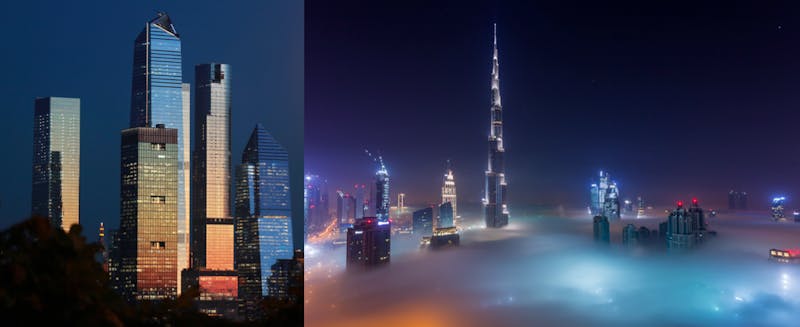Minneapolis’s new football stadium could have avoided murdering hundreds of birds. The City Council voted to construct it from special glass coated in a film that birds can see. Unfortunately for the birds, however, the stadium’s managers refused to use the recommended material, saying that it would ruin the sleek, futuristic aesthetic of the building, which juts out from its pavilion like a glassy crag. Nearly 300 birds collided with the building between 2017 and 2018; volunteers have found their corpses rotting all over the grounds.*
All told, glass buildings are responsible for up to one billion bird deaths in the United States each year. At a time when two-thirds of North American birds are in danger of extinction from climate change, it’s no exaggeration to say that glass architecture is a threat to life on Earth. Yet buildings sheathed in smooth glass walls continue to go up, not because they are cheaper to construct or better from an architectural standpoint, but because they embody modern luxury.
Since their introduction in 1851, when designers built the Crystal Palace to showcase the wonders of the Industrial Revolution at the World’s Fair in London, glass buildings have been emblematic of man’s triumph over nature. By the mid-twentieth century—when Mies van der Rohe completed the Seagram Building in Midtown Manhattan—the gleaming towers of glass became cognate with jet-set luxury. Many of these buildings aren’t particularly pretty: The skyscrapers of Hudson Yards and glittering phalluses of Dubai look a bit like sex toys; One City Center dwarfs Durham, North Carolina, like a bland, visible scar reminding residents of the city’s gentrification. Then, of course, there are the Trump Towers in both New York and Chicago—gaudy, glistening testaments to the old adage that “money doesn’t buy taste.” As we confront the reality of imminent climate change, these glass-clad corporate towers and multimillion-dollar condo complexes serve as an aesthetic reminder of who is most responsible for our warming world: corporations and the rich.

There’s also a little bit of a white lie in glass skyscrapers. Despite their sleek, weightless appearance, most of these buildings are, at their core, concrete—a carbon-intensive substance that is toxic when its dust is inhaled and wasteful in its water consumption. (If the cement industry were a country, according to The Guardian, it would be the third-largest carbon dioxide emitter in the world.)
Even if you bracket the cement scourge, these structures are environmentally disastrous. The materials employed in their construction are hauled for miles in fuel-burning trucks and shipped in gas-guzzling tankers. Once completed, the buildings are like towering greenhouses, incredibly expensive to keep cool when sun streams through their windows. Even the myriad buildings that receive certification from the Leadership in Energy and Environmental Design (LEED) consortium, the industry standard for green building, can still be energy hogs. The Bank of America Tower, which was hailed as New York’s “greenest” skyscraper, received top marks from LEED, and yet it requires vast energy reserves to light its trading floors and keep its servers and computer stations humming late into the night. As a result, when it comes to climate change, a banker who works in one of these buildings could be just as culpable as a suburbanite with a McMansion full of cavernous unused spaces and four-car garages.
Change won’t happen overnight. Architects and developers, as well as the U.S. Green Building Council, which decides LEED’s standards, will need to reassess their approach. We know more now about the state of the climate than we did in 1993, when those standards were written, and in 2009, when they were last fully revised. We have only 12 years to avoid the onset of an existential climate crisis—just enough time to wrestle with the ethics and aesthetics of luxury before their consequences wrestle with us.
* An earlier version of this article misstated the number of bird collisions with the US Bank stadium.

